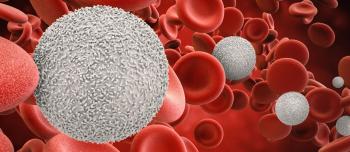In July, researchers at The Children's Hospital of Philadelphia (CHOP) published the results of a study in which they used bioengineered decoys as a ruse to foil the immune system. This allowed for the successful delivery of gene therapy in mice with hemophilia B, or FIX deficiency. The lead author of the study was Katherine High, MD, director of CHOP's Center for Cellular and Molecular Therapeutics.
High and her team used capsids, the protein shell that encapsulates a virus, as the decoy. They also used adeno-associated viruses (AAVs) as delivery vehicles, or vectors, to carry the actual genetic material that triggers the production of factor IX. AAVs have recently become the "vector of choice" for researchers because they can deliver the genetic material into living cells to sustain therapeutic effect without causing disease. In addition, they can be targeted to liver cells, which manufacture FIX.
However, one drawback in using injected AAVs is the body's natural immune response. In some cases, antibodies are released, neutralizing the AAVs. To remedy that, investigators injected both empty capsids and genetically altered AAVs into the mice. The empty capsids effectively drew antibodies to them and away from the gene therapy.
"This decoy strategy could be individualized to patients and could greatly expand the population of patients who may benefit from gene therapy," said High. "Right now, 30 to 60 percent of adult patients develop antibodies that block the ability of an intravenously infused vector to reach the target cells in the liver. This approach holds the promise of overcoming this roadblock--pre-existing antibodies--and allowing successful intravenous gene therapy in virtually all adult patients."
This technique also proved effective in follow-up studies performed in rhesus macaque monkeys. The therapy initiated higher levels of factor IX production, with no adverse events reported. Although additional studies, including clinical trials in humans, will be necessary before such a therapy becomes a reality, the authors are encouraged by these preliminary findings.
"Our results, which held up over a range of doses, suggest that in clinical studies, it will be feasible to adjust the ratio of empty capsids to gene vector doses, depending on an individual's pre-existing level of neutralizing antibodies. That means we could personalize gene therapy to make it more efficient for each patient," concluded High. "This work should make it possible to bring effective gene therapy to most adults with severe hemophilia B. Each patient would receive a personalized final formulation that contains just the right amount of empty capsid to neutralize any pre-existing antibody, and allow the gene-expressing vector to reach the liver."
The study, "Overcoming Pre-existing Humoral Immunity to AAV Using Capsid Decoys," was published in the July 2013 online issue of Science Translational Medicine.
Source: ScienceDaily, July 17, 2013





